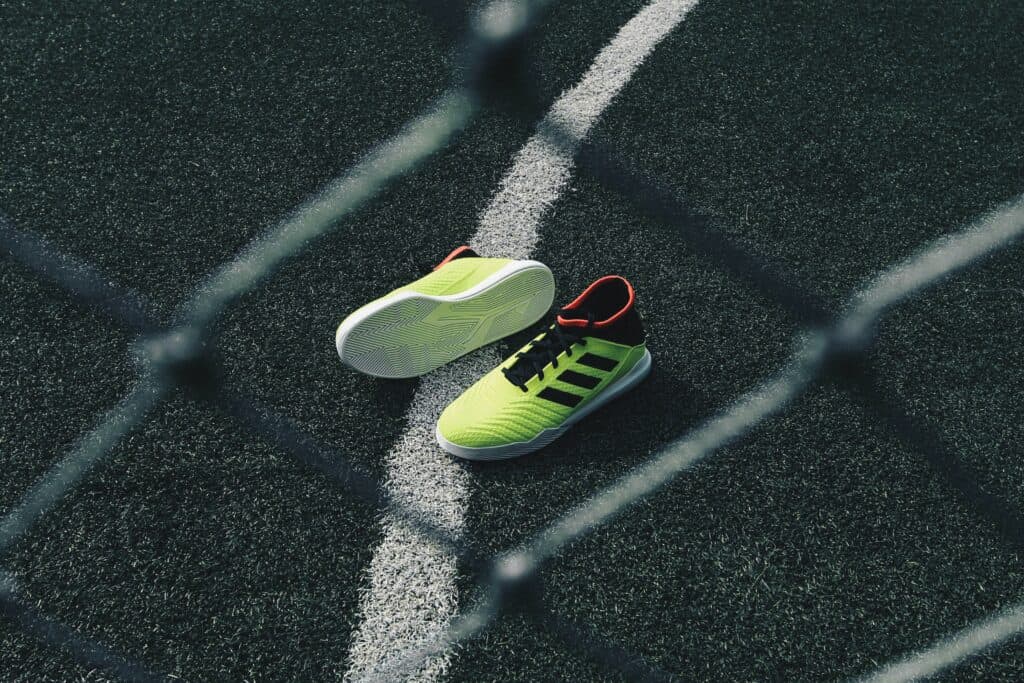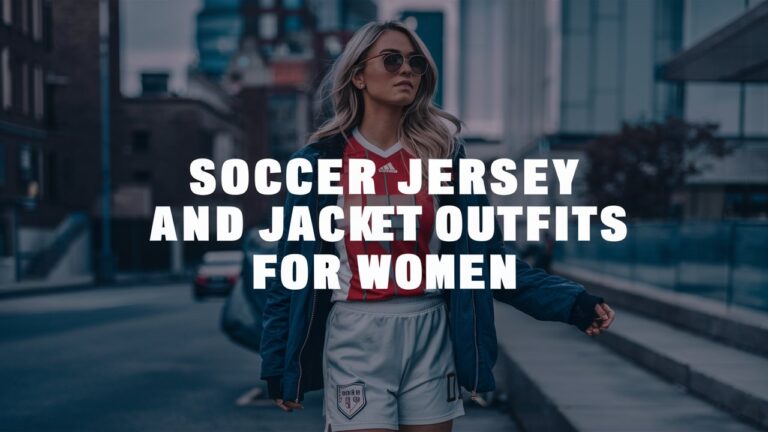How to Play Indoor Soccer (A Full Guide)
Indoor soccer is a fast-paced and exhilarating sport that combines the best of both worlds: the skill and precision of traditional soccer with the fast tempo of indoor sports. Played within the confines of a smaller field, indoor soccer requires players to be quick-thinking and agile in order to succeed.
If you’re looking to learn how to play indoor soccer, you’re in the right place. In this article, we will guide you through the basics of the game and give you tips and strategies so that you can start playing like a pro.
Basic Rules and Equipment

So, let’s start with the basics: the rules and equipment of indoor soccer. The first thing to note is that indoor soccer is typically played on a smaller field compared to outdoor soccer. The dimensions of the field can vary, but it’s usually around the size of a basketball court. So, this compact space creates an intense and fast-paced playing environment.
Now, when it comes to the number of players, indoor soccer typically involves teams of five players, including a goalkeeper. Unlike outdoor soccer, there are no offside rules in indoor soccer, which means players have more freedom to position themselves strategically without worrying about being caught offside.
As for the equipment, you’ll need a few essentials. Indoor soccer shoes are a must-have. They have flat soles or small rubber studs to provide traction on the hard indoor surface. Regular outdoor cleats are not suitable for indoor soccer as they can damage the court.
And of course, you’ll need a ball specifically designed for indoor soccer. These balls are typically smaller and have less bounce compared to outdoor soccer balls, allowing for better control and precision in the confined spaces.
To play indoor soccer properly, there are some rules that you’ll have to follow. First of all, indoor soccer players should not use excessive physical force while playing the game. You should especially avoid slide tackles because they’re prohibited.
Additionally, most indoor soccer leagues have specific rules regarding the use of walls or boards. In some cases, you can play the ball off the walls, which adds a whole new level of strategy to the game. However, depending on the league or facility, this may not be allowed, so it’s essential to familiarize yourself with the specific rules of the venue or league you’re playing in.
All in all, understanding the basic rules and having the right equipment is the first step that you’ll need while learning how to play indoor soccer effectively.
Getting Started

Now that you know the basics of the game, it’s time to start playing! Here are the steps on how to get started with indoor soccer:
- Form a team or find a league to join. You can gather a group of friends, colleagues, or fellow soccer enthusiasts to start a team. Alternatively, you can look for local indoor soccer leagues or clubs that offer opportunities for individual players to join existing teams.
- Find an indoor soccer facility in your area. There are many different types of indoor soccer facilities, such as sports complexes, community centers, and dedicated indoor soccer arenas. These venues typically have specially designed indoor soccer courts with proper flooring and walls. Some facilities even offer different league divisions based on skill levels, so you can find the right level of competition for you.
- Familiarize yourself with the scheduling and game format. Indoor soccer leagues usually have a regular season followed by playoffs or tournaments. Games are often played in a fast-paced format, with shorter halves compared to outdoor soccer. Understanding the league’s schedule, rules, and regulations will help you prepare and plan accordingly.
Essential Skills and Techniques

Now that you have a team and a place to play, let’s talk about the essential skills and techniques you’ll need to excel in indoor soccer.
Dribbling and ball control are fundamental skills that allow you to maneuver through tight spaces and evade opponents. You should mainly focus on close ball control, quick touches, and using both feet effectively. For that, you can practice different dribbling moves like cuts, feints, and changes of direction to keep defenders guessing.
Passing and receiving are vital skills for maintaining possession and creating scoring opportunities. The first step for you is to master the technique behind both long and shart passes. Then, you can gradually start working on receiving the ball under pressure, using various surfaces of your feet, chest, and thighs to control it smoothly.
Shooting and scoring goals require precision and composure. You should look to develop your shooting technique to deliver powerful and accurate shots. Practice different shooting styles, such as instep shots, volleys, and chip shots. Also, try to improve your ability to finish in tight spaces, where quick decision-making and accuracy are crucial.
Defending and tackling are equally important in indoor soccer. So, you should try to learn proper defensive positioning, marking opponents closely, and anticipating their moves. Moreover, you should also focus on timing your tackles effectively to win the ball without committing fouls. Remember, indoor soccer tends to be a fast-paced game, so staying alert and agile on defense is key.
If you’re interested in being a goalkeeper, specific skills are essential. Goalkeepers in indoor soccer face unique challenges due to the smaller field and quicker gameplay. Work on your reflexes, shot-stopping abilities, and distribution skills. Practice diving, positioning, and quickly transitioning from defense to attack.
By honing these essential skills and techniques, you’ll be well on your way to becoming a proficient indoor soccer player.
Strategies and Tactics

To excel in indoor soccer, it’s important to have a solid understanding of effective strategies and tactics. Different formations can be employed based on your team’s strengths and playing style. One common formation is the 2-2, which consists of two defenders, two midfielders, and a target forward.
This formation provides a balanced approach to both defense and offense. Another popular formation is the 1-2-1, where one defender holds the backline, two midfielders control the center of the field, and a forward leads the attack.
Offensive strategies in indoor soccer often involve quick and precise passing combinations to create scoring opportunities. Utilize the tight spaces to your advantage by playing one-two passes, wall passes, and exploiting overlaps. Constant movement and off-the-ball runs are crucial for creating openings and confusing the opposition’s defense.
Defensively, effective marking and communication are vital. Use a man-marking system to closely track opponents and limit their time and space. Coordinate with teammates to ensure proper defensive coverage and avoid leaving gaps. Pressing the opposing team high up the field can also disrupt their build-up play and force mistakes.
Common Indoor Soccer Techniques
Indoor soccer introduces unique techniques that are specific to the indoor environment. One popular technique is using the walls or boards strategically. Instead of passing directly to a teammate, you can play the ball off the walls to create unexpected angles and bypass defenders. Mastering this technique adds an element of surprise and enhances your team’s creativity in attacking plays.
Another exciting technique seen in indoor soccer is the overhead kick or bicycle kick. When executed properly, it can be a spectacular way to score goals or create goal-scoring opportunities. Practice the timing and coordination required for this acrobatic move, but remember to prioritize safety and be aware of your surroundings.
Shielding the ball is a crucial skill in indoor soccer, especially when you have limited space. Use your body to shield the ball from opponents and create space for yourself or your teammates. Quick turns and changes of direction can help you evade defenders and maintain possession.
Lastly, drawing inspiration from futsal, indoor soccer incorporates various tricks and skills. Moves like the “Elastico,” “Stepover,” or “Rainbow Flick” can add flair and deception to your game. While these tricks may not be essential, practicing them can enhance your overall ball control and provide moments of individual brilliance on the indoor soccer court.
By implementing effective strategies and incorporating these indoor soccer techniques into your gameplay, you’ll elevate your performance and contribute to your team’s success.
Tips for Improving Your Indoor Soccer Game
Looking to take your indoor soccer skills to the next level? Here are a few tips to help you improve your game:
- Practice regularly: Dedicate time to practicing your skills, such as dribbling, passing, shooting, and defending. Consistent practice is key to honing your abilities.
- Watch professional matches: Study the tactics and techniques used by professional indoor soccer players. Watch matches to gain inspiration and learn from their strategies.
- Seek guidance and feedback: Connect with experienced indoor soccer players or coaches who can provide valuable insights and advice to enhance your performance. Their feedback can help you identify areas for improvement.
- Participate in drills and small-sided games: Engage in specific drills that focus on indoor soccer skills and participate in small-sided games to improve your game understanding, decision-making, and adaptability on the court.
If you’re looking for more tips to improve yourself, then check out our Ultimate Guide to Indoor Soccer.
Injury Prevention and Safety

While indoor soccer is an exciting and fast-paced sport, it’s crucial to prioritize safety and take steps to prevent injuries. Here are some key considerations:
- Wear appropriate protective gear: Use shin guards to protect your lower legs from impacts and collisions. Additionally, you can even consider wearing knee pads and elbow pads to safeguard against falls and contact with hard surfaces. If you’re on the lookout for some indoor soccer shoes, check out our list of the best indoor soccer shoes.
- Warm up and stretch: Prior to playing, engage in a thorough warm-up routine that includes dynamic stretches to prepare your muscles for the demands of the game. Stretching helps increase flexibility and reduce the risk of muscle strains.
- Follow safety guidelines: Adhere to the rules and regulations set by your league or facility. These guidelines are in place to promote fair play and minimize the risk of injuries for all players.
- Communicate with teammates: Maintain open communication with your teammates to avoid collisions and ensure coordinated movements on the court. Clear communication helps prevent accidental clashes and promotes team cohesion.
Remember, safety should always be a top priority when enjoying the exhilarating world of indoor soccer. By following these tips and prioritizing injury prevention, you can continue to play the game you love while minimizing the risk of harm.
Conclusion
Indoor soccer offers a thrilling and fast-paced experience that combines skill, strategy, and teamwork. By understanding the rules, mastering essential skills, and implementing effective strategies, you can enhance your indoor soccer game.
Whether you’re a beginner or a seasoned player, consistent practice, seeking guidance, and participating in competitive matches can help you improve and enjoy the sport to the fullest. Remember to prioritize safety, follow proper techniques, and have fun on the indoor soccer court.







